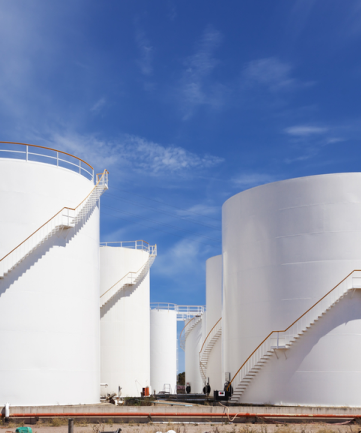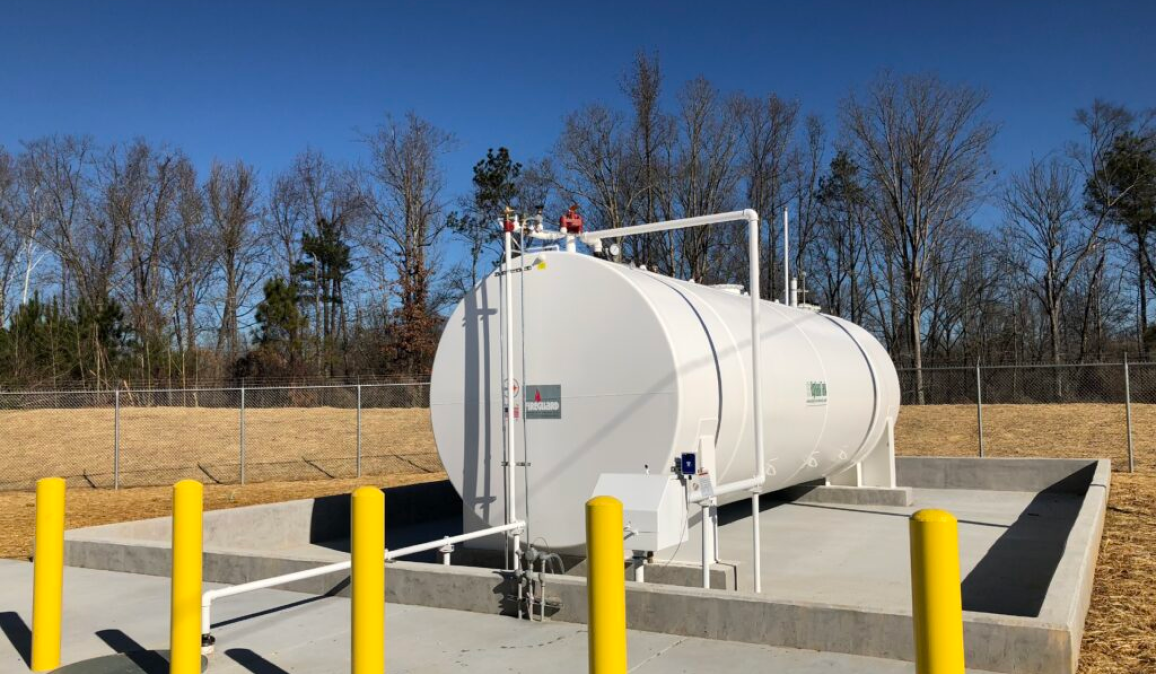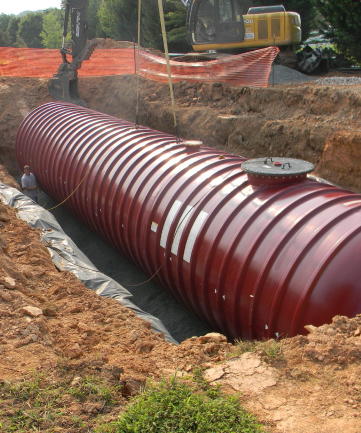Our reliance on fuel, be it for transportation, heating, or industrial purposes, underscores the significance of proficient fuel management. According to the U.S. Energy Information Administration (EIA), mishandling and improper storage of fuel contribute significantly to unnecessary wastage and accidents, with over 5,000 significant incidents reported over the past decade in the U.S. alone. This stark reality brings to light the urgency and need for adherence to best practices in fuel storage and handling.
As we navigate the intricacies of fuel management, this blog aims to equip you with the necessary knowledge and techniques to ensure that your fuel storage and handling protocols meet the highest standards of safety and efficiency. From understanding the types of storage systems and their maintenance to mastering safe handling procedures and emergency protocols, we cover a comprehensive range of topics that are fundamental to effective fuel management.
This essential guide caters to both the commercial sector and individual users, offering pivotal strategies to bolster both safety and efficiency in fuel management. In a realm where meticulous handling and precise storage of fuel critically influence both operational efficacy and safety, a thorough comprehension of these guidelines is indispensable.

Embrace this journey with us at Platform Ideas, as we impart expert insights and practical tips, ensuring you’re adeptly prepared to handle and store fuel in the safest and most efficient manner. Let’s transform the way we approach fuel storage and handling, prioritizing safety and sustainability every step of the way.
Stay tuned as we delve deeper into the pivotal aspects of fuel storage and handling, and how you can implement these practices to maximize safety and efficiency in your operations.
Types of Fuel Storage Systems:
Fuel storage systems are a critical component in the energy supply chain, with their design and type varying depending on usage, location, and safety considerations. The two primary categories are:
- Underground Storage Tanks (USTs): Commonly used for gasoline and diesel, USTs are preferred for their space-saving advantage and reduced risk of fire. The U.S. Environmental Protection Agency (EPA) reports that there are over 542,000 USTs nationwide used for petroleum storage. However, USTs require stringent leak detection systems due to potential environmental risks.
- Above-Ground Storage Tanks (ASTs): These tanks are often used for larger volumes and allow for easier inspection and maintenance. The American Petroleum Institute (API) standards, particularly API 650 and 653, provide guidelines for the design, operation, and maintenance of ASTs.

Selecting the Right Storage Solution:
Choosing the appropriate storage system involves several considerations:
- Capacity Needs: Determining the volume of fuel to be stored is crucial. For instance, a retail gas station might require a different capacity compared to an industrial facility.
- Space Availability: USTs are ideal for limited spaces, whereas ASTs require more ground area.
- Fuel Type: Different fuels have varying requirements. For example, flammable fuels like gasoline might necessitate more stringent safety measures compared to oil or diesel.
Maintenance Tips:
Proper maintenance is essential to prevent leaks, contamination, and ensure the longevity of the storage system:
- Regular Inspections: The National Fire Protection Association (NFPA) recommends frequent inspections for both USTs and ASTs to identify potential leaks or corrosion.
- Cleaning: Tanks should be cleaned periodically to prevent sediment build-up and contamination, as per EPA guidelines.
- Leak Detection Systems: Implementing robust leak detection technologies, as mandated by the EPA for USTs, is critical in preventing environmental hazards.
Effective fuel storage management not only ensures operational efficiency but also mitigates environmental risks. Adhering to regulatory standards and implementing best practices in maintenance can significantly enhance the safety and functionality of these storage systems.

Fuel Handling Best Practices
Proper fuel handling is crucial for maintaining safety and preventing environmental incidents. Here are some best practices for safe fuel transfer, selecting the right equipment, and ensuring personnel are adequately trained.
Safe Transfer Procedures:
Transferring fuel, whether from storage tanks to vehicles or between containers, involves inherent risks. To mitigate these, follow these steps:
- Pre-Transfer Inspection: Check the integrity of storage tanks, hoses, and connectors before transferring fuel. The Occupational Safety and Health Administration (OSHA) recommends a thorough inspection to identify potential hazards like leaks or wear.
- Grounding and Bonding: This is critical to prevent static electricity buildup, which can cause a fire. The National Fire Protection Association (NFPA) standards stipulate grounding and bonding procedures during fuel transfer.
- Spill Prevention: Employ spill containment methods like drip pans or absorbent materials, particularly during manual transfers. The Environmental Protection Agency (EPA) provides guidelines on spill prevention and control measures.
- Ventilation: Ensure adequate ventilation in the transfer area to disperse vapors, reducing the risk of inhalation exposure and fire.

Using the Right Equipment:
Selecting appropriate equipment is vital for safe and efficient fuel handling:
- Pumps: Use pumps rated for the specific type of fuel being handled. The American Petroleum Institute (API) provides specifications for various fuel handling equipment.
- Hoses and Fittings: Hoses should be durable and designed for the specific fuel type. Connectors and fittings must provide secure and leak-proof connections.
Training Personnel:
Proper training in fuel handling procedures is key to minimizing risks:
- Safety Training: Staff should be trained on safe handling practices, emergency response, and the use of personal protective equipment (PPE). OSHA provides guidelines and training resources for hazardous material handling.
- Operational Training: Personnel must be trained in operating pumps, valves, and other equipment, ensuring they understand the correct procedures for fuel transfer.
- Regular Drills: Conduct regular safety drills to ensure staff are prepared to handle emergencies like spills or fires.
By adhering to these best practices, organizations can ensure the safe handling of fuels, protecting both personnel and the environment. Regular updates to training and equipment, in line with the latest safety standards, are essential for maintaining a high standard of fuel handling safety.

Mitigating Risks and Ensuring Safety in Fuel Storage and Handling
Safety in fuel storage and handling is paramount, given the hazardous nature of fuel and the potential risks it poses. Here we outline common risks, safety measures, and the importance of regulatory compliance to mitigate these risks effectively.
Identifying Potential Hazards:
Common risks in fuel storage and handling include:
- Fire and Explosions: Due to the flammable nature of fuels, improper handling or storage can lead to fires or explosions. The NFPA reports that over 5,000 fires occur at gas stations in the U.S. annually, emphasizing the need for strict safety measures.
- Environmental Spills: Fuel spills can lead to significant environmental damage. The EPA records over 6,000 significant oil spills in the U.S. every year, impacting water and soil quality.
- Health Hazards: Prolonged exposure to fuel vapors can lead to health issues, as noted by OSHA, including respiratory problems and skin irritation.
Implementing Safety Measures:
To mitigate these risks, the following safety measures are recommended:
- Fire Safety: Install and maintain fire extinguishers, and ensure proper electrical grounding of fuel systems. The NFPA provides comprehensive guidelines on fire safety measures for fuel storage facilities.
- Spill Prevention and Control: Implement spill containment systems, and have spill kits readily available. The EPA’s Spill Prevention, Control, and Countermeasure (SPCC) rule outlines necessary measures for oil spill prevention and response.
- Emergency Response Plans: Develop and regularly update emergency response plans for dealing with fires, spills, and other incidents. OSHA’s guidelines on emergency action plans offer a framework for creating effective response strategies.
Regulatory Compliance:
Adherence to local and federal regulations is critical for safety in fuel handling:
- Local Regulations: Comply with local fire codes and environmental regulations, which may vary by region.
- Federal Regulations: Follow federal regulations from agencies like the EPA, which oversees environmental protection, and OSHA, which sets standards for workplace safety.
Regular training and audits are crucial for ensuring compliance with these regulations. Staying informed about regulatory changes and industry best practices can significantly reduce risks associated with fuel storage and handling.

Efficiency in Fuel Storage and Handling
Efficiency in fuel storage and handling is crucial for operational success and environmental sustainability. By optimizing storage capacity, implementing eco-friendly practices, and effective inventory management, organizations can enhance efficiency and reduce their environmental footprint.
Optimizing Storage Capacity:
Maximizing storage efficiency requires a balance between capacity needs and safety:
- Capacity Utilization: Utilize the full capacity of storage tanks while adhering to safety limits. The American Petroleum Institute (API) recommends maintaining an optimal level to prevent overfilling and allow for safe expansion of fuel.
- Space Management: Efficiently design storage facilities to maximize space usage without compromising safety access and egress routes. The NFPA 30 code provides guidelines on spacing and layout of fuel storage tanks.
- Tank Design: Consider innovative tank designs that offer higher storage capacity within a smaller footprint, such as vertical tanks for certain applications.
Eco-Friendly Practices:
Adopting environmentally responsible practices in fuel storage and handling is increasingly important:
- Double-Walled Tanks: Use double-walled tanks, which provide an added layer of protection against leaks, thereby reducing environmental risks. The EPA’s regulations under the SPCC program encourage the use of such containment measures.
Leak Detection Systems: Install advanced leak detection systems for early identification of potential leaks, minimizing environmental damage. The EPA’s guidelines on leak detection methods offer valuable insights. - Emission Control: Install advanced leak detection systems for early identification of potential leaks, minimizing environmental damage. The EPA’s guidelines on leak detection methods offer valuable insights.

Inventory Management:
Effective inventory management ensures that fuel supply meets demand without overstocking:
- Automated Monitoring Systems: Utilize technology such as automated tank gauging to accurately monitor fuel levels, improving inventory control.
- Regular Audits: Conduct regular inventory audits to identify discrepancies and optimize ordering schedules.
- Demand Forecasting: Implement demand forecasting tools to accurately predict fuel needs, reducing the risk of excess inventory or shortages.
By enhancing efficiency in fuel storage and handling, organizations not only streamline their operations but also contribute to environmental conservation. Adhering to regulatory standards and adopting best practices in efficiency and sustainability can lead to significant operational and environmental benefits.

In conclusion, the importance of effective fuel storage and handling cannot be overstated in ensuring both safety and operational efficiency. Adhering to the guidelines and best practices outlined not only helps mitigate risks associated with fuel management but also enhances overall efficiency. This is particularly crucial in an industry where the consequences of mishandling can be significant, both environmentally and economically.
For commercial and retail users alike, staying informed about the latest standards and innovations in fuel storage and handling is essential. For instance, the American Petroleum Institute’s (API) guidelines and the Environmental Protection Agency’s (EPA) regulations provide invaluable resources for up-to-date practices in the industry. The implementation of advanced technologies, such as automated monitoring systems and leak detection equipment, as recommended by industry experts, further aids in maintaining the integrity of fuel management processes.
Moreover, the ongoing efforts to adopt eco-friendly practices, such as the use of double-walled tanks and vapor recovery systems, align with global environmental sustainability goals. These measures not only contribute to the reduction of the carbon footprint but also comply with the stringent environmental regulations set forth by organizations like the EPA and the International Maritime Organization (IMO).
At Platform Ideas, we are committed to providing insights and the latest best practices in the energy sector. Our goal is to empower users with the knowledge and tools necessary to navigate the complexities of fuel management effectively and responsibly. We invite you to explore our resources for more in-depth information and guidance on various aspects of energy management and sustainability.
By remaining proactive and informed, stakeholders in the fuel industry can successfully manage their operations while contributing positively to environmental conservation and safety standards. This proactive approach to fuel management is not just a regulatory requirement; it is a commitment to a safer and more sustainable future in energy management.





